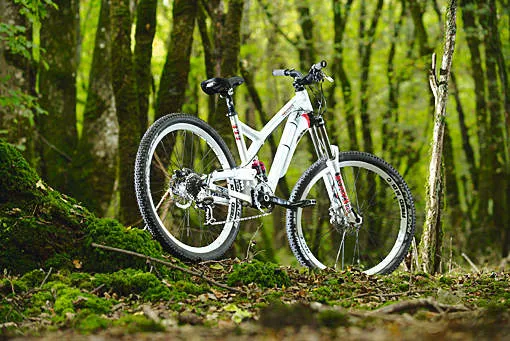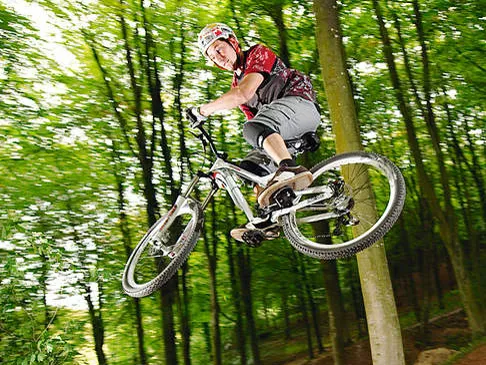The technology on the new breed of all-mountain bikes is unbelievable. Manufacturers have combined the lightness and agility of a cross-country machine with the toughness of a freeride bike to make bikes that can be chucked into anything and will still climb back to the top for more.
This feature is going to show you how making a few setup changes to your bike will get the most from it for every discipline, all done using the tools that you have in your riding pack.
Dirt jumping
Dirt jump bikes are like big BMXs. They generally have a small hardtail frame with a short-travel fork, and the majority of them are singlespeed, with one rear brake. Their suspension is pretty stiff, the tyres are pumped up to around 80psi and the handlebars can spin a full 360 degrees with the help of long cables.
They’re going to be taking some big knocks, so dirt jump bikes have to be pretty sturdy. Some riders opt for smaller 24in wheels because they are slightly stronger than standard 26in wheels. They rarely use full-sus bikes because the suspension takes a lot of the energy out of the jump.
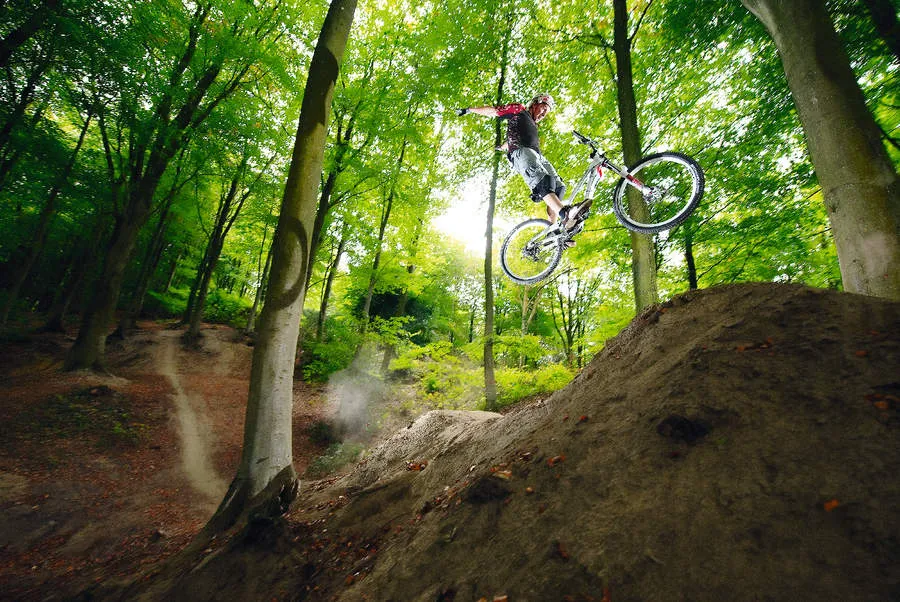
It might sound like dirt jump bikes are an entirely different breed to your all-mountain steed, but with these changes you can set it up to jump as well as any specific bike:
- Tyre pressure: A minimum of 50psi creates a fast-rolling tyre that helps you keep your speed between jumps and is very predictable when trying tricks.
- Saddle height: Generally speaking, your saddle should be low and out of the way, but if you’re trying no-handed tricks, raise it slightly so you can clamp it with your knees. Raise the nose of the saddle up slightly to help with this too.
- Fork height: Wind your fork down so it’s at its minimum travel. This creates a much faster-handling bike with a steeper head angle.
- Shock and fork: Stiffen up the suspension so it barely moves when you sit on it. This makes the bike way more predictable. It’ll run faster through the jumps and won’t buck on take-offs.
- Gear selection: Use the big chainring to keep your chain tensioned – this will minimise the noise it makes.
- Shock rebound: Set your shock rebound so it’s slow enough not to kick you over the bars on take-off, but fast enough to give you a bit of a kick off the take-off.
Downhill
Downhill bikes are all about speed, stability, being able to take huge hits on the suspension and maintaining grip anywhere they go.
A slacker head angle and a longer fork make the bike stable at speed, yet lose out on slower, more technical styles of riding. A long wheelbase keeps the bike stable but also gives it the turning circle of a barge.
Tyre pressures are mid-range. The tyres themselves vary from course to course, but tend to be heavy-duty, with thick inner tubes – great for rock gardens but a nightmare on anything but a downhill-specific machine.
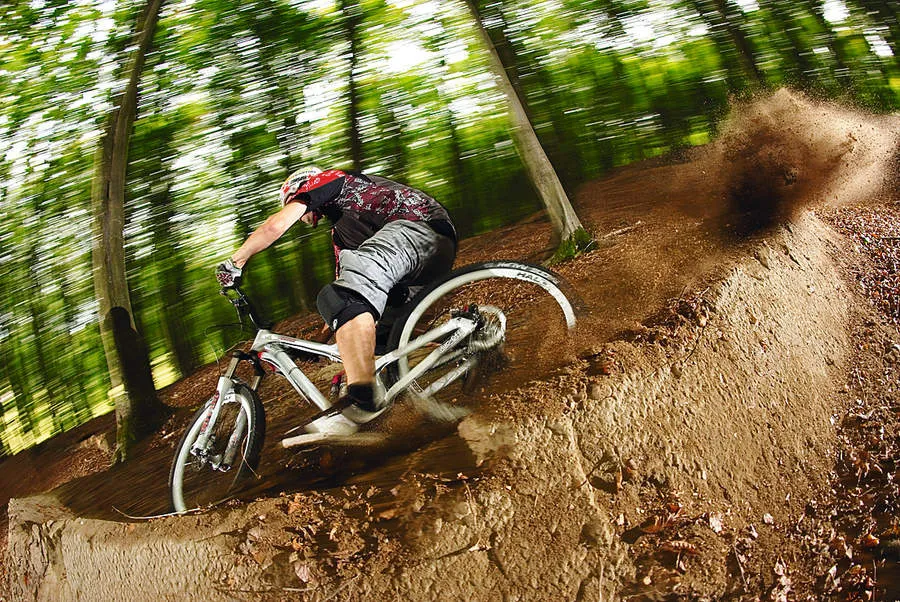
Here are a few ways to make your all-mountain setup more suitable for downhill gnarliness:
- Gear selection: Go for the big chainring. It keeps the chain tighter so there’s less chance of it coming off. It runs quieter, there’s less chain-slap, and when you pedal, you make it count rather than spinning.
- Saddle height: Keep your saddle low, but not so low your knees are around your ears – just enough to not interfere with your riding.
- Fork travel: If you have an adjustable travel fork, wind it out to its maximum length. Long forks mean slack head angles, which are great for high-speed descending, and they get your weight back off the front wheel too.
- Tyre pressure: Run mid-to-high pressure, especially if you’re using lightweight tyres. This wards off pinch-punctures. About 40psi is ideal.
- Suspension: Go for around 25-30 percent sag on your suspension. It’s a personal preference thing, but you should aim to use all your travel at least once in your run.
Cross-country
Cross-country is mountain biking in its purest form. Riding your bike up, down and across the great outdoors is what it’s all about. Cross-country bikes tend to be super-light and are designed to be ridden for hours at a time. Pretty much everything is adjustable on a cross-country bike.
Super-light tends to mean not so strong though, so pushing these kinds of bikes to the extremes is not recommended. Cross-country bikes come in many different guises – short or long travel, full-sus or hardtails, 29ers and so on.
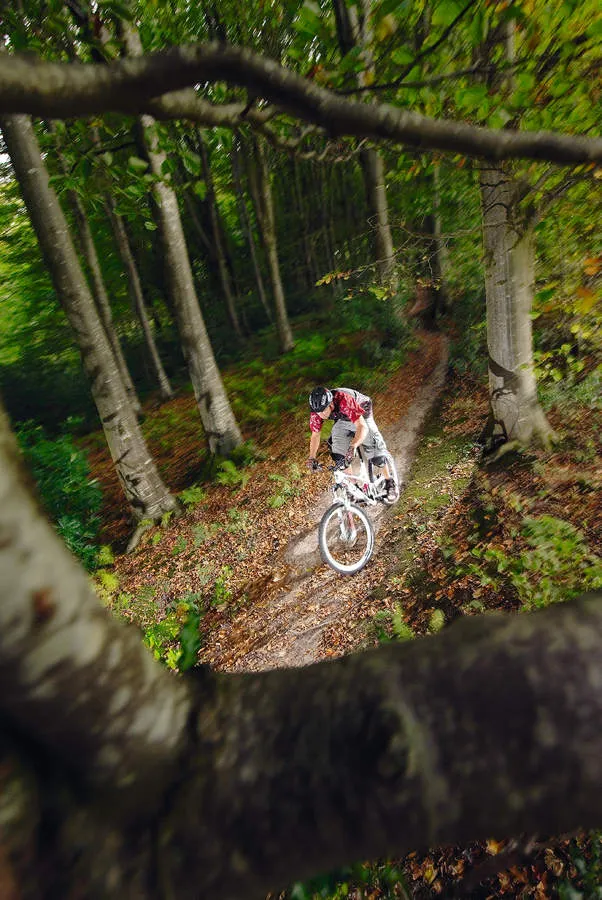
Adjusting your all-mountain bike to make it work for cross-country is simple! Just follow these steps:
- Fork height: Keep the fork to its minimum travel setting. This steepens the head angle to make climbing easier and sharpens slower-speed handling by keeping more weight on the front wheel.
- Saddle height: Your saddle should be high enough for you to be able to extend your leg fully by the time you reach the bottom of the pedal stroke – this gives greater pedalling efficiency.
- Tyre pressure: Around 40psi will give grip in all situations. It’s not low enough to drag but is enough to ward off pinch-punctures on the downhills.
- Suspension: Keep your fork and shock firm enough not to rob you off any riding energy, but soft enough to let them do their jobs – go for 25-30 per cent sag.
- Shock rebound: A mid-range setting is ideal, then you can dial it in to your personal preferences.
Street & park
Street riding is about using whatever lies in front of you and creating a move or a line that includes it, whether it’s a bench, a tree or a ledge. Taking a heavy influence from BMX and skateboarding, it’s what a lot of the younger riders are riding now.
Bikes tend to be hardtails with near-slick tyres pumped up to 70psi or more. Some riders use a rigid fork to save weight and give a more direct feel to their bikes, and suspension is pretty much solid – front suspension that is; pure street riders never use full suspension. They usually only have a rear brake, a singlespeed setup and their seats are slammed as low as possible.
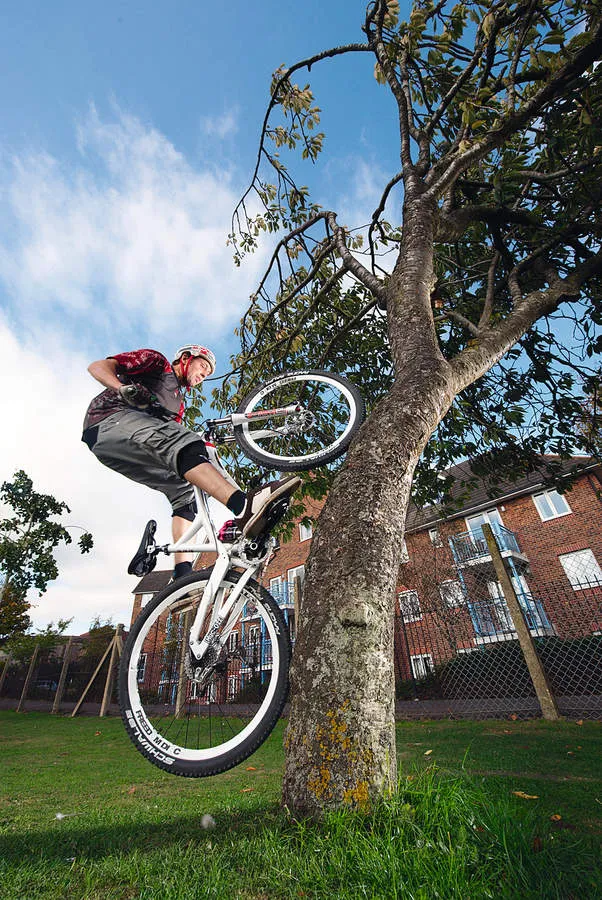
Here’s how to go about setting up your ride for street:
- Fork height: Set your fork height to minimum travel, to give the bike a steep head angle and sharpen up its handling.
- Tyre pressure: Tyres are put to the test when riding street. They’re under a lot of stress. A tyre pressure of 60psi stops them deforming and keeps the bike rolling fast.
- Suspension: Make the suspension as stiff as possible – every ounce of energy needs to go into moving your bike, and not be sucked up by the suspension.
- Gear selection: The big chainring will keep your chain tight. Also make sure the derailleur doesn’t drag if you’re doing any fakie (backwards) moves.
- Shock rebound: A mid-range setting is ideal – this’ll give you just enough kick for bunnyhops.
- Saddle height: Keep your saddle low and out of the way, so it doesn’t interfere with your moves.
Freeride
Freeride is all about doing what you want on your bike, wherever and whenever you want to. It’s about not pedalling miles or sessioning downhill runs, it’s about having a laugh on whatever you might come across.
Freeride-specific bikes are lightweight downhill bikes. They’re pretty similar to their bigger brothers, they’re just slimmed down a bit, with slightly steeper frame angles. They’re not ideal for slogging around the woods but they’re great fun for what they’re designed for.
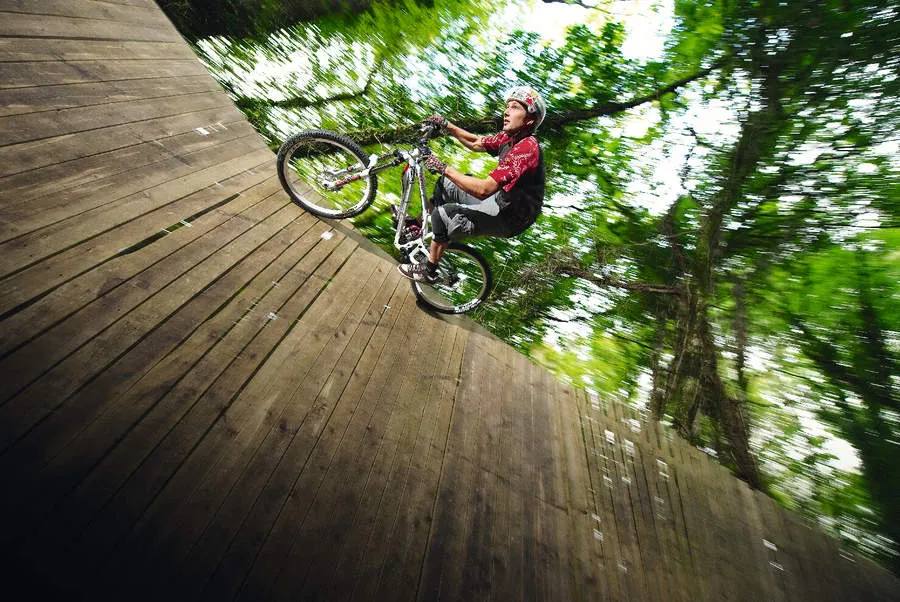
Here’s the changes you should make to customise your all-mountain setup to make it fierce enough for freeride:
- Saddle height: You should have your saddle low enough to pinch with your knees if you’re planning on doing any limbs-off tricks. Even if you’re not, keep it out of the way because you won’t be sitting down much.
- Gear selection: Go for the middle or large chainring. This keeps the chain tight so there’s less noise and less chance of it coming off.
- Suspension: Run your shock and fork stiffer so they don’t bottom-out on big hits so easily. It’ll also make your bike more responsive with stiffer suspension, and more agile.
- Shock rebound: Slow the rebound down slightly so it doesn’t return violently and buck you off on landings, but so it’s still fast enough to have life to ‘ping’ for take-offs.
- Tyre pressure: A minimum of 40psi stops the tyres rolling off the rim and wards off pinch-punctures, as well as creating a more predictable tyre that doesn’t squirm on landings and take-offs.
- Fork height: Keep the fork at its maximum longest setting for the big hits, and wind it down if the going gets more technical and slower paced.
Trail tools
All of the adjustments in this feature can be made with the tools you’d usually carry with you in your riding pack. These examples are all widely available from bike shops.
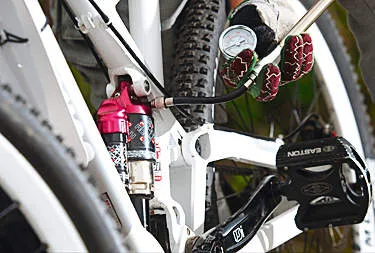
Shock pump: A small shock pump that fits easily into your riding pack will give you the range of suspension adjustments needed for any of these disciplines. We like: Topeak Pocket Shox DXG (www.extrauk.co.uk).
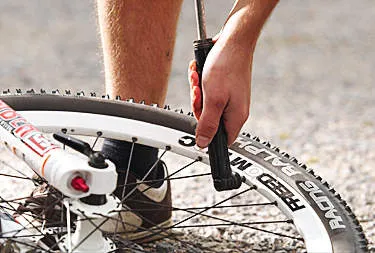
Mini pump: A mini pump with a gauge tool. Ideally, it should be compatible with both Presta and Schraeder valves. We like: CrankBrothers Power Pump Pro (www.crankbrothers.com).
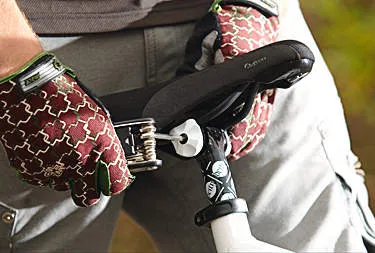
Multi-tool: You should never leave home without a tidy multi-tool that has a tool for every occasion. We like: Topeak Alien 2 (www.extrauk.co.uk).
What's an all-mountain bike?
An all-mountain bike is one of the new breed of full-suspension machines that's designed to handle almost everything a mountain biker will run into out on the trails, from steep climbs to rocky descents. Chris's Corsair Marque is a good example, with 5in (130mm) of travel and a stronger, slacker frame than a typical cross-country bike.
